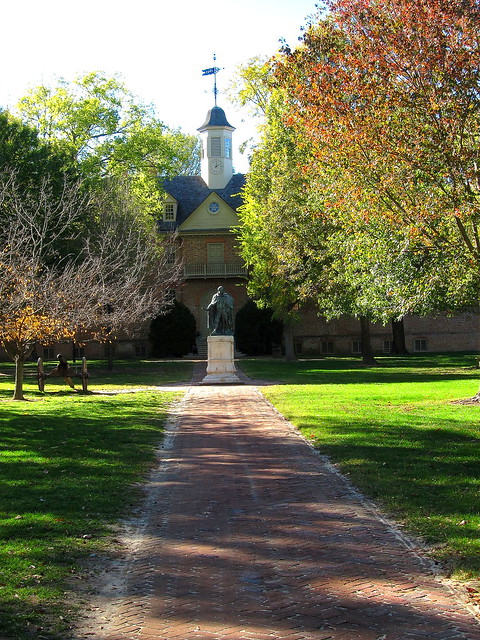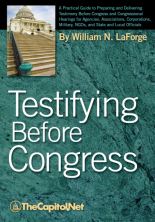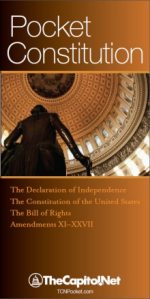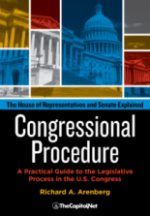From the Congressional Glossary – Including Legislative and Budget Terms
Electoral College

Each State shall appoint, in such Manner as the Legislature thereof may direct, a Number of Electors, equal to the whole Number of Senators and Representatives to which the State may be entitled in the Congress: but no Senator or Representative, or Person holding an Office of Trust or Profit under the United States, shall be appointed an Elector.
When a voter on election day casts a ballot for president and vice president, she is voting indirectly for a presidential and vice presidential ticket and directly for a slate of electors. Under authority granted in Article II, Section 1, Clause 3 of the Constitution to set the time of choosing electors, Congress set election day as the Tuesday after the first Monday in November (2 U.S.C. § 7).
Electoral college | American civics | US History | Khan Academy
There are currently 538 electors who make up the electoral college. In addition to each state’s constitutional allocation based on two senators and its number of representatives–ranging for the 2012, 2016, and 2020 elections from a minimum of three electors to California’s fifty-five–the District of Columbia also has three electors pursuant to the Twenty-third Amendment to the Constitution. To be elected president and vice president, the Twelfth Amendment requires candidates to obtain a majority in the electoral college, or, currently, 270 votes.
Electors for a presidential and vice presidential ticket in a state are chosen in accordance with law made by a state’s legislature. While state laws vary on the selection of electors, slates of nominees for electors are partisan, usually reflecting choices of state party conventions or state party central committees; electors are expected to support their party’s candidates for president and vice president. State law also governs contests involving presidential electors, and, pursuant to federal law, a state’s resolution of contests is conclusive when it occurs at least six days before the electoral college meets. As soon as practicable after the election, or after the resolution of any contests, each state’s governor sends a certificate of ascertainment of the electors appointed to the archivist of the United States and six duplicate-originals to the state’s electors.
In locations designated by state law, electors representing each state’s winning slate meet in their states on the first Monday after the second Wednesday in December (following the 2012 general election, December 17, 2012), and cast separate ballots for their party’s presidential and vice presidential candidates. All but two states (Maine and Nebraska) award electoral votes on a winner-take-all basis for the presidential and vice presidential ticket—technically, the ticket’s slate of electors—that receives the greatest number of votes state-wide. Maine and Nebraska award two electoral votes on the basis of statewide results and the balance of their electoral votes (two for Maine and three for Nebraska) on the basis of congressional district results. Although electors can, and occasionally have, cast ballots for individuals other than the winning ticket’s candidates, electors are expected to vote for their party’s candidates. Some states have laws that attempt to enforce that expectation.
Records of each state’s electors’ balloting are transmitted to the vice president of the United States in his role as president of the Senate, to the archivist of the United States, to the state’s secretary of state, and to the federal district court of the district in which the electors met.
On January 6 following the election, unless Congress has changed the law to designate another day, the House and Senate assemble at 1:00 p.m. in the House chamber for the counting of the electoral votes. The vice president of the United States presides, although the Senate president pro tempore may preside if the vice president declines or the vice president’s office is vacant. The certificates and ballots of each state’s electors are opened, proceeding in the alphabetical order of the states. The vice president reads a state’s certificate and ballot, and calls for objections. He then presents the ballot to the four tellers–two from each chamber–who were previously selected by their respective chambers. When all the certificates and ballots are opened, read, and counted, the tellers present the results to the vice president. If one of the candidates for each of the offices receives a majority of the electoral votes (currently 270 of 538), the vice president announces the election of the president and vice president.
Videographic: How does the US presidential election system work?
An objection to a state’s electoral votes must be in writing and signed by one representative and one senator. If there is a valid objection, the joint session is recessed at that point, the Senate withdraws to its chamber, and the two houses consider the objection. In these sessions, members may speak just once and for no more than five minutes. At the end of two hours, the chambers vote and then reconvene their joint session. Unless both chambers vote to uphold the objection, it fails. If both houses agree to the objection, the vote or votes objected to are not counted. This procedure was followed in 2005 after an objection by Rep. Stephanie Tubbs Jones (D-OH) and Sen. Barbara Boxer (D-CA) to the Ohio ballot. Neither chamber upheld the objection. The principal reasons there might be an objection are that a vote was not “regularly given” by an elector, for example, a “faithless” elector voting for someone other than the winners in his state, or that an elector was not lawfully certified, or both. Federal law (3 U.S.C. § 1 et seq.) provides guidance on resolving instances when there might be more than one list of electors.
The Electoral College is administered by the Office of the Federal Register (OFR), which is within National Archives and Records Administration (NARA). OFR also administers the Constitutional Amendment process.
For specific information on electoral college procedures and the reasons therefore, see the web site of the National Archives and Records Administration. Electoral college procedures and the role of Congress are codified at 3 U.S.C. § 1 et seq.
Dave Leip has an “Atlas of US Presidential Elections” that covers 1789 to present and shows the candidates, parties, electoral votes, and electoral map.
Also see
- Apportionment; Congressional Election Information; Mid-Term Election; President Pro Tempore; Reapportionment; Vice President; § 2.11 Congressional Election Information, § 8.91 Electoral College, in Congressional Deskbook
- Chapter 8.O. Presidential Election in Congressional Procedure.
See also Election Capitol Hill Workshop.
How the Electoral College Works
More
- “The seven stages of the office seeker“
- The Constitution of the United States: Amendment 12 (Twelfth Amendment – Election of President and Vice-President)
- Electoral College – NARA
- Electoral College – Wikipedia
- Office of the Federal Register (OFR) – NARA
- What is the Electoral College? – Michigan State Dept.
- “The Electoral College: How it Works in Contemporary Presidential Elections,” CRS Report RS20273 (8-page PDF
 )
) - “Supreme Court Clarifies Rules for Electoral College: States May Restrict Faithless Electors,” CRS Legal Sidebar LSB10515 (6-page PDF
 )
) - “The Electoral College: An Overview and Analysis of Reform Proposals,” CRS Report RL30804 (35-page PDF
 )
) - “Elections Reform: Overview and Issues,” CRS Report RS20898 (37-page PDF
 )
) - “The Electoral College: Reform Proposals in the 108th Congress,” CRS Report RL32612 (17-page PDF
 )
) - “The American Electoral College: Origins, Development, Proposals for Reform or Abolition,” CRS Report 79-72 (44-page PDF
 )
) - “Election of the President and Vice President by Congress: Contingent Election,” CRS Report RS20300 (8-page PDF
 )
) - The Electoral College: How It Works in Contemporary Presidential Elections, CRS Reports RL32611 (34-page PDF
 )
) - The Electoral College: A 2020 Presidential Election Timeline, CRS Insight IF11641 (5-page PDF
 )
) - “The Electoral College,” by William C. Kimberling, Deputy Director, FEC Office of Election Administration, May 1992 (20-page PDF
 )
)
Courses
- Congressional Operations Briefing – Capitol Hill Workshop
- Drafting Federal Legislation and Amendments
- Writing for Government and Business: Critical Thinking and Writing
- Custom Training, On-Site and Online
- Preparing and Delivering Congressional Testimony and Oral Presentations, a Five-Course series on CD
- Congress, the Legislative Process, and the Fundamentals of Lawmaking Series, a Nine-Course series on CD
Publications

Testifying Before Congress |

Pocket Constitution |

Citizen’s Handbook to Influencing Elected Officials: A Guide for Citizen Lobbyists and Grassroots Advocates |

Congressional Procedure |
CongressionalGlossary.com, from TheCapitol.Net
For more than 40 years, TheCapitol.Net and its predecessor, Congressional Quarterly Executive Conferences, have been teaching professionals from government, military, business, and NGOs about the dynamics and operations of the legislative and executive branches and how to work with them.
Our custom on-site and online training, publications, and audio courses include congressional operations, legislative and budget process, communication and advocacy, media and public relations, testifying before Congress, research skills, legislative drafting, critical thinking and writing, and more.
TheCapitol.Net is on the GSA Schedule, MAS, for custom on-site and online training. GSA Contract GS02F0192X
TheCapitol.Net is now owned by the Sunwater Institute.
Teaching how Washington and Congress work ™

